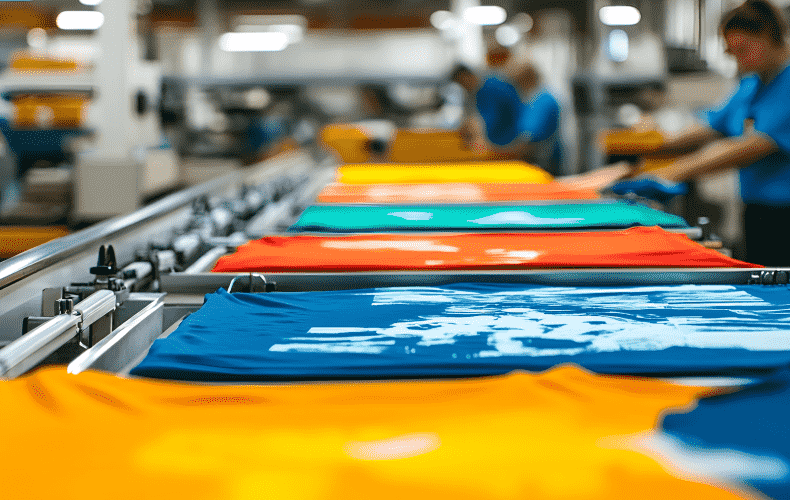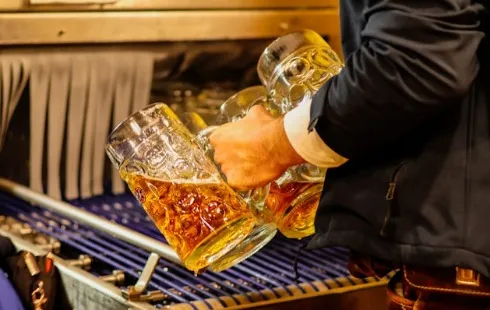
Custom T-Shirts: Last-Minute Gifts They'll Actually Love
Section: Arts
It seems that bacteria are putting their genetic stability at risk in a bid to strike it lucky and acquire mutations that may give them an advantage in the microbial survival stakes.
Scientists at University of Washington announced last week in Nature that certain genes in the model bacterium Bacillus subtilis are located on prime collision paths for machines that read their DNA code. When two of these reading vehicles crash, instabilities in the bacterial chromosome cause possible changes in the code or even complete loss of genes.
Bacteria use genome organization to minimize such accidents. However, it turns out they can also take advantage of this situation by actually subjecting certain genes to collisions to increase the chance of improving protein function by mutating the code.
The researchers, led by Assistant Professor Houra Merrikh and Professor Evgeni Sokurenko at the University of Washington's microbiology department and their respective teams are working together to understand the evolutionary significance of these conflicts.
Two fundamental processes that require gene reading are replication and transcription. Replication occurs during cell division and each cell ends up with a copy of the genetic material. Transcription results in the code being translated into proteins.
DNA is a double strand and the two threads are so-called leading and lagging. For bacteria like B. subtilis, reading for both replication and transcription on the leading strand progress in the same direction and although collision of the machines is inevitable since transcription progresses slower than replication, the consequences of such co-directional conflicts are minimal. A head-on crash however, occurs on the lagging thread as the machines move in opposite directions, and unlike co-directonal collisions, head-on collisions can have a major impact on genomic stability.
The researchers found that the mutation rate as a result of machine collisions was higher when head-on crashes occurred as opposed to those in the same direction. Moreover, long genes suffered more mutations. Professor Merrikh explained, "The longer the gene, the longer it takes to replicate and transcribe and the more probable it is there is a head-on collision between the two sets of machinery."
To avoid this pile-up situation, bacteria locate most of their genes on the leading strand. However, despite the inherent genetic danger a crash brings, the scientists found that some 25 percent of B. subtilis genes are found on the lagging strand. Even more astonishing, 6 percent of its essential or housekeeping genes controlling functions like growth and reproduction are located on the high-risk thread. Moreover, they found that the genes on the lagging strand tend to be those with high adaptive significance as they code for stress response genes that are important for dealing with environmental changes.
B. subtilis is a gram positive bacterium and closely related to common disease-causing microbes including streptococcus, staphylococcus and listeria. Accelerated evolution in pathogenic bacteria could increase their virulence or cause persistent infections. "As the basic mechanisms for replication and transcription as well as features of genome organization relating to gene orientation are conserved between these close relatives, it's not unreasonable to think those bugs are doing the same thing." Professor Merrikh said.
As for the selection pressures at work behind this seemingly reckless genetic arrangement, there must obviously be an overwhelming advantage associated with fast mutation to warrant the genetic chaos that may ensue.
As Professor Merrikh explains, "There are many ways in which a bacterium can become resistant to drugs. A lot of it has to do with horizontal gene transfer (DNA passed between bacteria during 'reproduction' and from bacteriophages). Some of that resistance however does arise due to point mutations, so in cases like these, this mechanism could result in a resistant microbe."
The researchers have shown that head-on replication-transcription clashes can significantly increase changes in structural proteins coded from the new sequences arising from the wreckage. By exposing some of its genes to a high probability of risk, B. subtilis could well be in a winning situation with a high return in terms of adaptive prowess.
http://www.eurekalert.org/pub_releases/2013-03/uow-hcb032813.php

Section: Arts

Section: Arts

Section: Business

Section: Business

Section: Arts

Section: Health

Section: Arts

Section: News

Section: News

Section: Arts
Health Insurance in Germany is compulsory and sometimes complicated, not to mention expensive. As an expat, you are required to navigate this landscape within weeks of arriving, so check our FAQ on PKV. For our guide on resources and access to agents who can give you a competitive quote, try our PKV Cost comparison tool.
Germany is famous for its medical expertise and extensive number of hospitals and clinics. See this comprehensive directory of hospitals and clinics across the country, complete with links to their websites, addresses, contact info, and specializations/services.
One of the most beautiful squares transforms into a summer stage every year for two days. The Gärtnerplatz Open-Air features a free music and cultural program across three stages, as well as street food from local vendors. On Saturday, the main stage at Gärtnerplatz offers something for everyone,...



No comments yet. Be the first to comment!